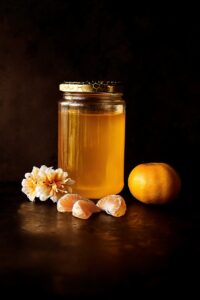
Explore & Play
Discover interesting topics and solve the accompanying crossword puzzle.
Tree Crossword Puzzle | Common Tree Species
Table of Contents
Welcome to our comprehensive guide on common trees around the world! To enhance your experience, we invite you to first tackle the Tree crossword puzzle. It’s a fun way to test your knowledge of various tree species. After completing the crossword, dive into the article to learn more about each tree in detail. If you’re new to the topic, feel free to start with the article to gain a solid understanding before returning to the crossword. Enjoy exploring and learning about the fascinating world of trees!
Tree Crossword
You can either fill in the crossword puzzle directly on this page or click the button in the bottom right corner to print it for free.

Guide to Common Trees Around the World
Trees are an essential part of our planet, offering beauty, resources, and crucial environmental benefits. In this comprehensive guide, we explore a variety of common and intriguing tree species from around the globe. Whether you’re a tree enthusiast or simply curious, this article will provide you with valuable insights into each type of tree. Additionally, challenge yourself with our tree-themed crossword puzzle to test your knowledge as you read!
I. Deciduous Trees: The Changing Faces of Nature
Deciduous trees bring a dynamic element to our landscapes with their seasonal transformations. These trees shed their leaves annually, offering a changing palette of colors and textures throughout the year.
- Oak
The oak is a symbol of strength and endurance, renowned for its large, robust presence. These trees are often found in temperate regions and are celebrated for their hard wood, which is commonly used in furniture and flooring. Oaks also support a wide range of wildlife, from birds to insects, making them vital to many ecosystems.
- Maple
Maples are famous for their stunning autumn foliage, which ranges from brilliant reds to vibrant yellows. Beyond their visual appeal, maples are also known for producing maple syrup, a sweetener enjoyed worldwide. Varieties like the sugar maple are especially prized for their sap, which is harvested in the spring.
- Birch
Birches are easily recognizable by their distinctive white bark and slender branches. These trees thrive in cooler climates and are often seen in forests and along riverbanks. Their bark has been used historically for making canoes and writing materials, showcasing its versatility.
- Cherry
Cherry trees are celebrated for their beautiful spring blossoms and sweet, juicy fruit. The cherry blossom, or sakura, is especially revered in Japan, where it symbolizes the fleeting beauty of life. Additionally, cherry trees produce fruit that is enjoyed fresh or used in cooking and baking.
- Apple
Apple trees are a staple in orchards around the world, producing one of the most popular fruits. They come in numerous varieties, each with distinct flavors and uses, from fresh eating to baking and cider making. Apple orchards not only provide fruit but also add aesthetic value to rural landscapes.
- Pear
Similar to apples, pear trees offer sweet, juicy fruit that varies in texture and flavor. These trees are often cultivated in orchards and are enjoyed both fresh and in various culinary dishes. Pear trees also contribute to the diversity of fruit trees in temperate regions.
- Plum
Plum trees produce round, sweet fruit that can be red, purple, or yellow. These trees are valued for their delicious fruit, which can be eaten fresh or used in jams and sauces. Plums are also known for their beautiful spring blossoms, adding seasonal charm to gardens.
- Hawthorn
The hawthorn is notable for its thorny branches and small, colorful fruit. Often found in hedgerows and as ornamental trees, hawthorns are valued for their seasonal interest and their use in traditional medicine. Their berries, known as haws, are sometimes used in herbal remedies and jams.
II. Evergreen Trees: The Green Giants of the Forest
Evergreen trees provide a constant splash of green throughout the year, maintaining their foliage in all seasons. These trees play a crucial role in providing habitat and resources for wildlife.
- Pine
Pine trees are easily identified by their needle-like leaves and cones. They are widely used in the construction industry for their strong, durable wood and are also an important source of timber and paper products. Pines are commonly found in forests and are well-adapted to a variety of climates.
- Cedar
Cedars are aromatic evergreens known for their durable wood and pleasant scent. Often used in furniture and building materials, cedar wood is resistant to decay and insects. These trees are native to various regions, including the Mediterranean and parts of North America.
- Fir
Firs are popular during the holiday season for their use as Christmas trees. Their flat needles and symmetrical shape make them ideal for decoration. Additionally, fir trees are used in the production of paper and construction materials.
- Spruce
Spruce trees are similar to pines but have shorter, needle-like leaves and distinctive cones. These trees are commonly used in construction and for making musical instruments due to their resonance. Spruces are found in a range of climates, from temperate to subarctic regions.
- Cypress
Cypress trees have feathery foliage and are often found in wetlands and along waterways. They play a vital role in preventing soil erosion and providing habitat for wildlife. Cypress wood is valued for its durability and resistance to rot, making it useful in construction.
- Juniper
Juniper trees are known for their berry-like cones, which are used in the production of gin. They have needle-like leaves and are often found in arid regions. Junipers are also used as ornamental plants and for their aromatic wood.
- Yew
Yew trees are characterized by their dark green, needle-like leaves and red berries. They are often planted in gardens for their dense foliage and use in traditional medicine. Yew wood is extremely durable and was historically used for making longbows.
- Larch
Larch trees are unique among evergreens because they shed their needles in the fall. These deciduous conifers offer beautiful yellow foliage in autumn and are valued for their strong, water-resistant wood.
III. Fruit Trees: Nature’s Bounty
Fruit trees enrich our diets with their delicious produce and contribute to biodiversity in gardens and orchards.
- Peach
Peach trees are known for their fuzzy skin and sweet, juicy fruit. They thrive in warm climates and are enjoyed fresh or used in various culinary dishes. Peaches add a burst of flavor to desserts and are a favorite in summer recipes.
- Plum
Plum trees produce a range of fruit colors and flavors, from tart to sweet. These trees are grown for their fruit, which is used in cooking and preserves. Plums also provide beautiful blossoms in the spring.
- Chestnut
Chestnut trees produce spiky fruits that contain edible nuts. These trees are valued for their nutritious nuts and their hardwood, which is used in furniture and construction. Chestnuts are often roasted and enjoyed as a seasonal treat.
- Olive
Olive trees produce small fruits used primarily for making olive oil, a staple in many cuisines. They thrive in Mediterranean climates and are also valued for their ornamental appearance. Olives are integral to many traditional dishes and culinary practices.
IV. Tropical and Exotic Trees: Wonders from Far-Off Lands
Tropical and exotic trees offer unique beauty and ecological functions in their native regions.
- Baobab
The baobab is known for its massive trunk and unique appearance. Native to Africa, these trees are vital for their water-storing capacity and nutrient-rich fruit. The baobab’s silhouette is iconic in many African landscapes.
- Jacaranda
Jacaranda trees are celebrated for their vibrant purple flowers, which create stunning displays in urban and garden settings. They are native to tropical regions and add a splash of color to any landscape.
- Catalpa
Catalpa trees are known for their large, heart-shaped leaves and showy flowers. They are often used as ornamental trees in landscaping due to their distinctive appearance and seasonal interest.
- Tamarind
Tamarind trees produce pod-like fruits that are used in cooking and beverages. Native to tropical regions, tamarind is valued for its tangy flavor and is a key ingredient in many cuisines.
V. Unique and Lesser-Known Trees: Hidden Gems
Some trees, while less common, offer distinctive features and valuable ecological roles.
- Acacia
Acacia trees are known for their small, yellow or white flowers and their adaptability to arid regions. They provide important resources for wildlife and are used in various traditional applications.
- Mimosas
Mimosa trees are recognized for their fluffy pink flowers and sensitive leaves, which fold when touched. These trees add a delicate beauty to gardens and are valued for their ornamental qualities.
- Boxwood
Boxwood trees are often used in formal gardens and topiary due to their dense foliage and ability to be shaped. They are popular for creating hedges and decorative elements in landscaping.
- Ironwood
Ironwood trees are noted for their exceptionally hard and durable wood. This wood is used in various applications, from tools to furniture, and the tree itself is valued for its strength and longevity.
- Holly
Holly trees are famous for their spiky leaves and bright red berries, especially during the winter holidays. They are often used in decorations and have cultural significance in various traditions.
VI. Tree Conservation and Sustainability
Protecting and conserving tree species is crucial for maintaining our environment and biodiversity. Trees play an essential role in air purification, climate regulation, and habitat provision. Conservation efforts help ensure that these vital resources remain available for future generations. Sustainable practices, such as responsible harvesting and reforestation, are key to preserving tree populations and their ecological benefits.
VII. Discover More and Challenge Yourself
Trees are diverse and integral to our world, each with its unique features and importance. As you explore the various tree species in this guide, we invite you to test your knowledge with our tree-themed crossword puzzle. It’s a fun way to reinforce what you’ve learned and discover even more about these remarkable plants. Play the crossword and see how many tree names you can identify!
Share to...
I hope you enjoy the content.
Want to receive our daily crossword puzzle or article? Subscribe!
You may also be interested in
Share to…
Want to receive our daily crossword puzzle?
-
Jigsaw Puzzles
Charming Hamster Art Nouveau Jigsaw Puzzle 250 | 300 | 500 Pieces
kr 348,00 – kr 439,00Price range: kr 348,00 through kr 439,00 Select options This product has multiple variants. The options may be chosen on the product page -
Jigsaw Puzzles
Rose-Tinted Dreams Floral Puzzle 250 | 300 | 500 Pieces
kr 348,00 – kr 439,00Price range: kr 348,00 through kr 439,00 Select options This product has multiple variants. The options may be chosen on the product page -
Jigsaw Puzzles
Zodiac Ink Art Puzzle: The Playful Monkey 250 | 300 | 500 Pieces
kr 348,00 – kr 439,00Price range: kr 348,00 through kr 439,00 Select options This product has multiple variants. The options may be chosen on the product page

















